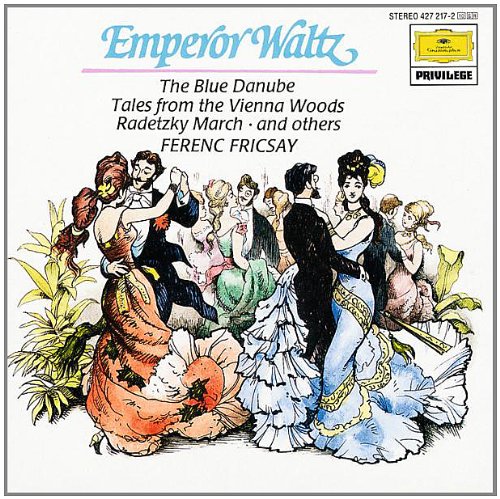
Vladimir Horowitz-The Last Recording-CD-FLAC-1990-FORSAKEN
Description :
Artist : Vladimir Horowitz
Album : The Last Recording Label : Sony Classical Genre : Classical Source : CD Street Date : 1990-04-09 Quality : 366 kbps / 44.1kHz / 2 channels Encoder : FLAC 1.2.1
Size : 158.23 MB
Time : 57:46 min Url : http://www.vladimirhorowitz.info
1. Piano Sonata, Hob. XVI: 49 – I. Allegro 6:45 2. Piano Sonata, Hob. XVI: 49 – II. Adagio e cantabie 8:08 3. Piano Sonata, Hob. XVI: 49 – III. Finale: Tempo di Minuet 3:35 4. Mazurka, Op. 56, No. 3 5:12 5. Nocturne, Op. 55, No. 2 4:46 6. Fantaisie-Impromptu, Op. 66 4:38 7. Etude, Op. 25, No. 1 2:26 8. Etude, Op. 25, No. 5 3:23 9. Nocturne, Op. 62, No. 1 6:51 10. Weinen, Klagen, Sorgen, Zagen 5:23 11. Isoldes Liebestod (Tristan und Isolde) 6:39
Vladimir Horowitz had just celebrated his 86th birthday when
sessions for this recording began in October of 1989. He had
recently been lured to Sony Classical by their new director,
Gunther Breest, who had signed Horowitz on at Deutsche Grammphon
in 1985. One advantage that Sony carried, besides a bigger
paycheck, was the latest technology. This recording utilized
Sonys then new 20-bit technology, which resulted in a more
defined sound picture for this most subtle of pianists.
The contents of this CD were all new to the Horowitz discography.
By the late 1980s, Horowitz had refined and stripped down his art
to the essentials. There are none of the histrionics of his early
recordings, nor any of the attempts to prove to the listener that
he could still play the fastest and the loudest which marred some
of his recordings from the 1970s.
Horowitz was stimulated by Haydns diverse pianistic textures and
whimsical changes of mood. The first movement, a bouncy Allegro,
is a perfect demonstration the “controlled freedom” of Horowitzs
late period. While following the same basic pulse, Horowitz
introduces tiny alterations of tempo which keeps the music
flowing coherently, without sounding metronomic. The rapidly
ascending scale passages here are played with a dazzling evenness
of touch. The slow movement, a true cantabile, is phrased as
though it were being sung rather than played. The minor key
outburst is, for a rarity, truly shocking. The Finale is played
with a gentle virtuosity which never goes beyond the bounds of
appropriate Haydn style.
Horowitz recorded more of Chopins music than that of any other
composer. He was justly famous for his performances of Chopins
Mazurkas, which seamlessly blended the dance and poetic elements.
The performance of the C minor Mazurka here makes one regret he
didnt record many more.
Horowitz was fanatically passionate about Ignaz Friedmans
performances of the Nocturnes, but recorded surprisingly few
himself. Many of his earlier recordings of the Nocturnes were
played on too large a scale, with a prevalent note of hysteria.
The two Nocturnes presented here are another story indeed. There
is a rare sense of repose, at times an almost deathly calm, about
these performances. There is also Horowitzs rare ability to
weight the various elements of melody, harmony, and
accompaniment, down to the smallest micron. Horowitz floating of
the top, middle, and lower lines, interweaving them effortlessly,
is in many ways more stunning than any kind of thundering
virtuosity.
But if its the more obvious kind of virtuosity you want, it is
amply demonstrated in the Fantasie-Impromptu. Played at an
extremely fast tempo, Horowitz demonstrates here that fidelity
and freedom with regard to the score can coexist. He is one of
the few pianists who bothers to repeat the first phrase as a
quieter echo of the forte statement–as indicated in the score.
He also preserves the structure of the piece by maintaining the
initial tempo in the central section rather than slowing down to
chase rainbows–and he adds some tiny embellishments along the
way.
Horowitz is technically and musically on top of the A-flat Etude,
but the E Minor Etude suffers from an overstressed ending.
Horowitz was very selective about which Liszt he chose to
preserve on recordings. For this recording, he chose the rarely
played Prelude from Weinen, Klagen, Sorgen, Zagen, a desolate
reworking of a theme from J. S. Bachs Cantata No. 12. Horowitz
masterfully alters the mood for each variation, while maintaining
the inner continuity of the piece.
Naturally, the Wagner/Liszt Liebestod (literally, “Love/Death”)
would have extramusical implications due to the circumstances of
the recording. It is true, Horowitz plays the aria as if he knew
this would be his swansong, giving the performance all the
eroticism, lyricism, and thundering virtuosity he could muster,
for the last time. He died on Sunday, November 5th, four days
after the Liebestod was taped.
This recording is a must for all Horowitz admirers, indeed, for
all those who value great piano playing. The informative and
moving liner notes are by Horowitzs friend and junior colleague
Murray Perahia, who was with the Maestro the day before he died.
http://uploaded.net/file/aeezdcuh/Vladimir_Horowitz-The_Last_Recording-CD-FLAC-1990-FORSAKEN.rar
or:


















